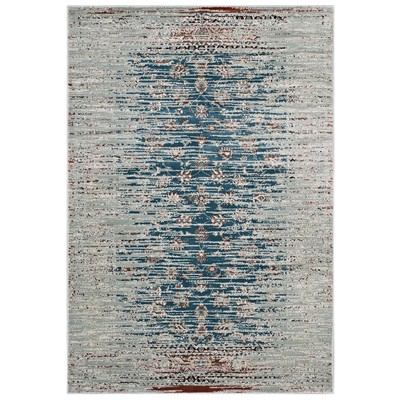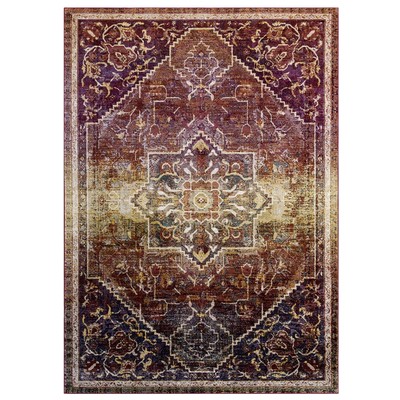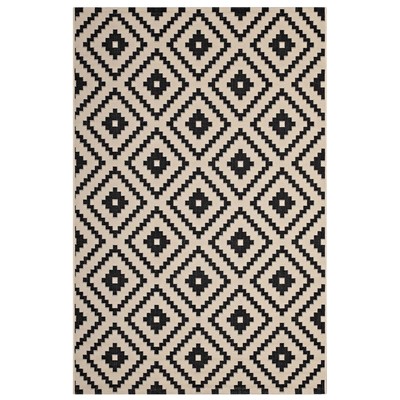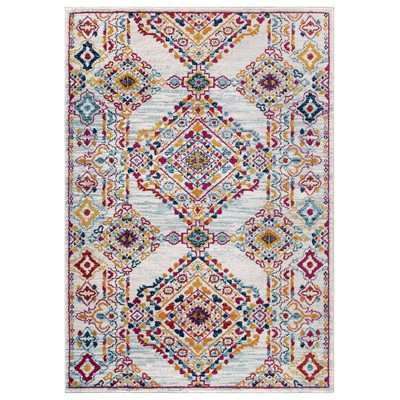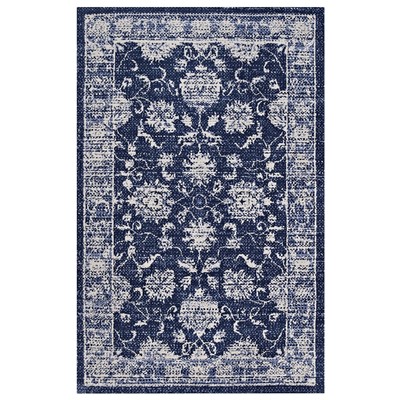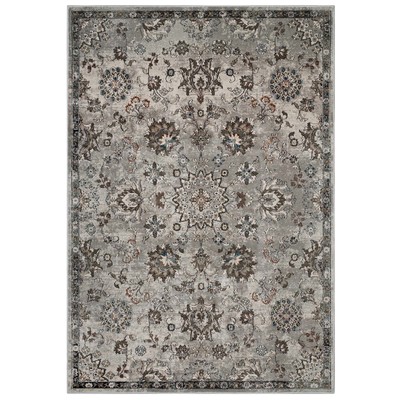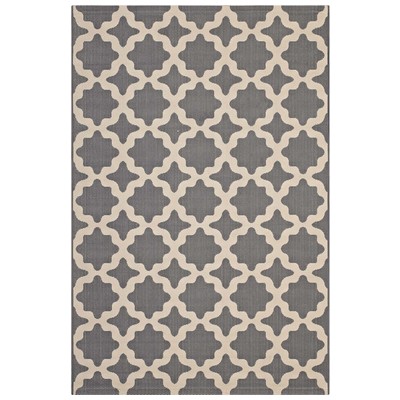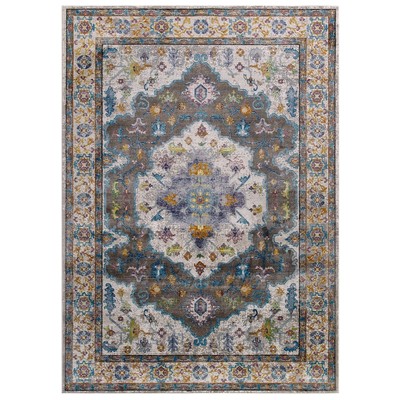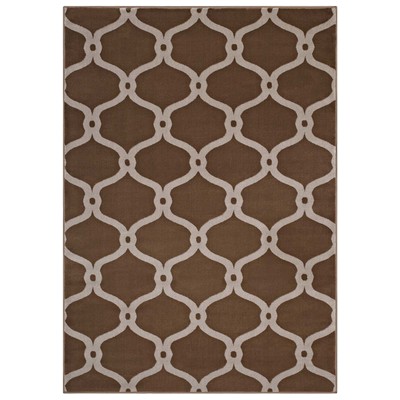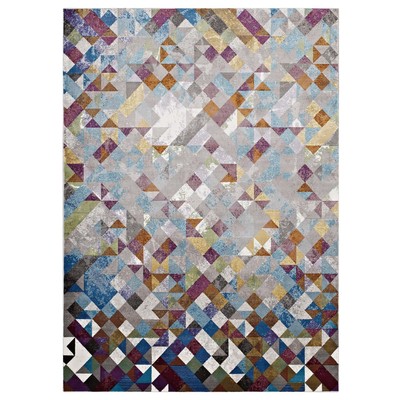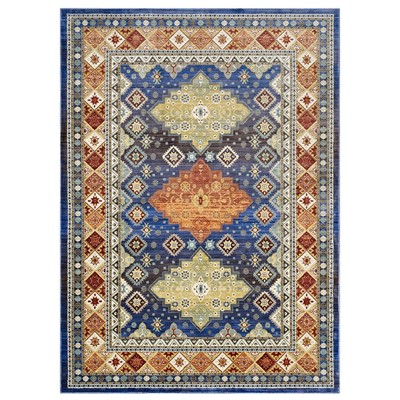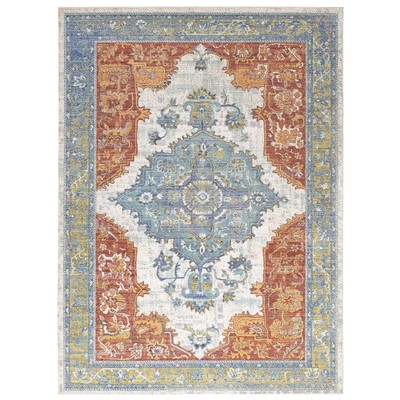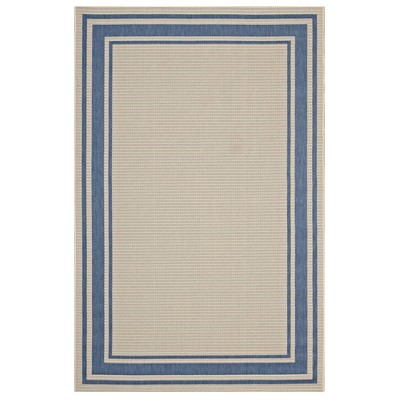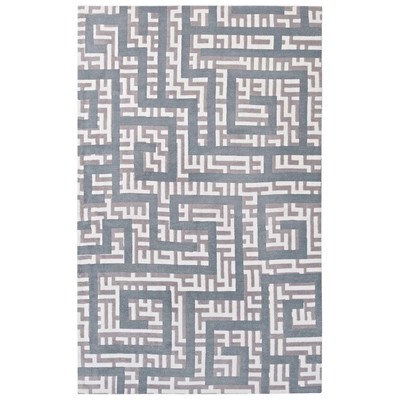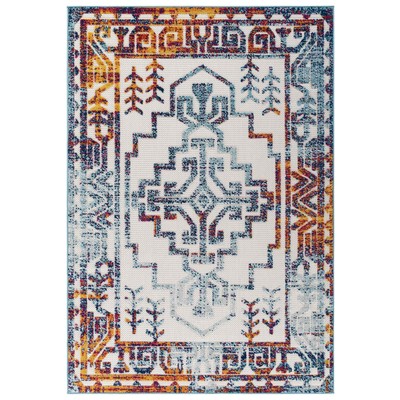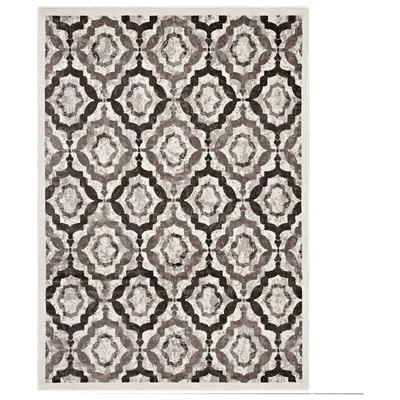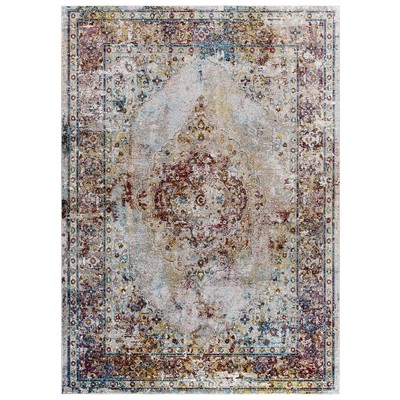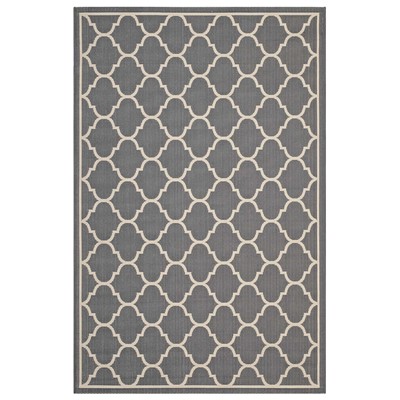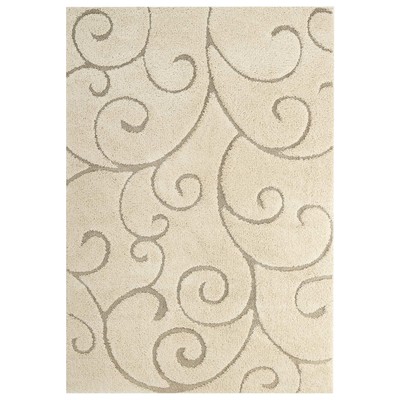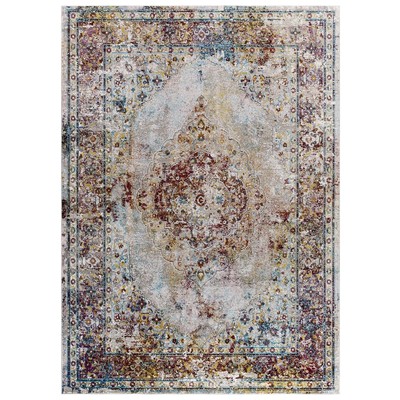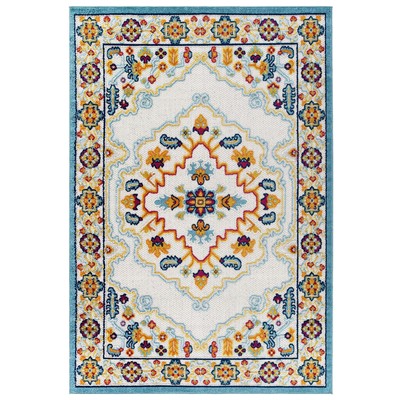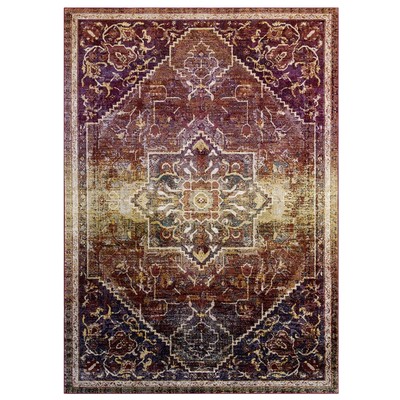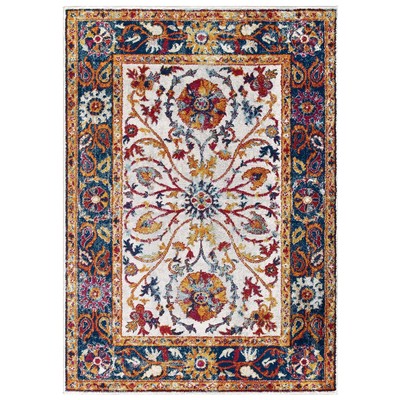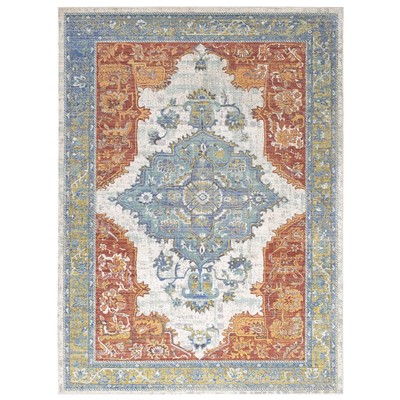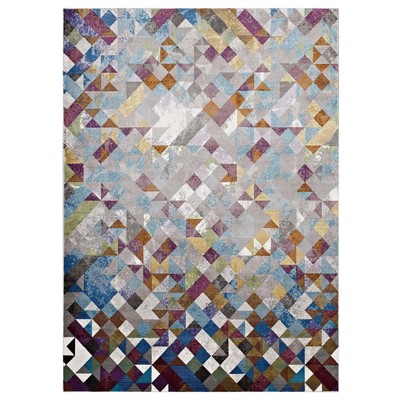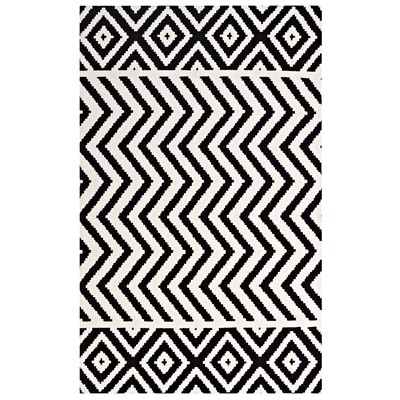When buying a new area rug, the first step is always figuring out what size rug you need. But the second step – choosing a material – is every bit as important. And it’s not just an aesthetic choice, either. The material used to make a rug determines how durable it will be, how easy it is to clean, and how it will feel underfoot. Not to mention, it’s a big factor in what you’ll end up paying for the rug, too.
Wool
Wool is far and away the most common material used to make area rugs, and has been for centuries. A high quality, well-made wool rug can last for generations. They’re extremely soft, hold dye well, can stand up to heavy foot traffic, won’t crush over time, and develop a beautiful patina with use. You can vacuum, wet clean, or gently spot clean wool rugs, but you shouldn’t toss them in a washing machine. For a deep clean, you’ll need to have them professionally dry cleaned. Wool rugs will shed fuzz while they’re new, but this isn’t cause for concern. The biggest drawback of wool rugs is their price: they’re among the most expensive area rugs out there. That said, because the material is so common, you can find a huge variety of styles at different price points, from expensive hand-woven area rugs to more affordable machine-made rugs.
Shop Rugs:
Cotton
Cotton area rugs are also quite common, and are available in a wide variety of colors and styles. Cotton is a more affordable alternative to wool, and the two are sometimes blended. That said, cotton rugs have a homier, more casual appearance. While they’re quite durable and stand up well to heavy traffic, they certainly aren’t heirloom quality pieces and won’t last a lifetime. One of the main appeals of cotton area rugs is that they’re extremely easy to clean; not only do they stand up well to spot cleaning, vacuuming, steam, and wet cleaning, but most of them you can toss right in the washing machine. That makes them a good choice for mess-prone areas like the kitchen.
Silk

Silk rugs are another type of heirloom-quality rug. These include what you probably think of as oriental rugs, but can come in more modern designs as well. Rather than pure silk, silk rugs are actually a combination of silk and wool. But it’s the silk that gives the rugs their distinctive sheen and sleek feel, and brings out the details in the wool design. Unfortunately, silk is a very delicate material; silk rugs should live in low-traffic areas and can be fussy to clean. The rarity of real silk also makes silk rugs quite expensive. But a beautiful hand-woven silk rug is very much an investment piece; each one is one-of-a-kind and will last for many years if properly cared for.
Natural Fibers
You can also find rugs made from a variety of other plant-based natural materials like jute, hemp, sisal, and sea grass. Natural fiber rugs are generally a bit rougher, ranging from fairly soft to coarse and scratchy. Jute is the softest and least expensive, but tends to shed and won’t stand up well in high traffic areas. Hemp rugs are popular for their neutral color and sustainability and tend not to shed, but are more expensive because they’re woven by hand rather than machine-made. Both sisal and sea grass hold up very well to heavy traffic, but are quite rough in texture – more like stiff mats than cushy rugs.
The main drawback of these fibrous area rugs is that they’re much less durable. While they can handle foot traffic just fine, they can be crushed by furniture; you can clean them out by shaking them or vaccuming up loose dirt. But they can disintegrate when exposed to water, and can fade or become brittle when placed in direct sunlight. Perfect for adding a more natural touch, these rugs won’t last quite as long, but are generally more affordable than cloth rugs.
Synthetics
There are also several types of synthetic rugs available, including nylon, polyester, and polypropylene. Made from a variety of synthetic materials, they mimic the look and feel of traditional wool rugs. Nylon and polyester hold their colors well and feel soft and plush underfoot. Polypropylene rugs come in a more limited variety of colors and are stiffer, but you can use them outdoors. You can keep all three in good shape for years with simple routine vacuuming and spot cleaning. The real appeal of synthetic rugs is that they’re much more affordable than cloth ones. That also makes them easier to swap out when you change your decor, rather than designing around a rug you’ll have for a lifetime. The lifespan of synthetic rugs is years rather than decades; they won’t improve with age the way wool rugs do, and they tend to crush under furniture more easily.
Leather

Leather is probably the most oddball material on this list. Typically, leather rugs are hide rugs, which naturally vary in size and shape; though they have the durability of tanned leather, their smaller size and inconsistent texture make them better as accent rugs. Personally, I like to pair them with a larger rectangular area rug for contrast and better traction. That said, you can also find actual square rugs made of leather as well, either in a woven pattern, stitched strips, or a fine knotted fringe that mimics shag carpet. This type of leather rug has the unique, natural feel of leather and is quite soft underfoot. Cleaning techniques vary from piece to piece, and although leather is fairly resistant to stains, this type of rug should generally be reserved for lower traffic areas (especially hide rugs, which are a bit more delicate).
For more information about choosing a new rug, check out Part 1 and Part 2 of this series.



